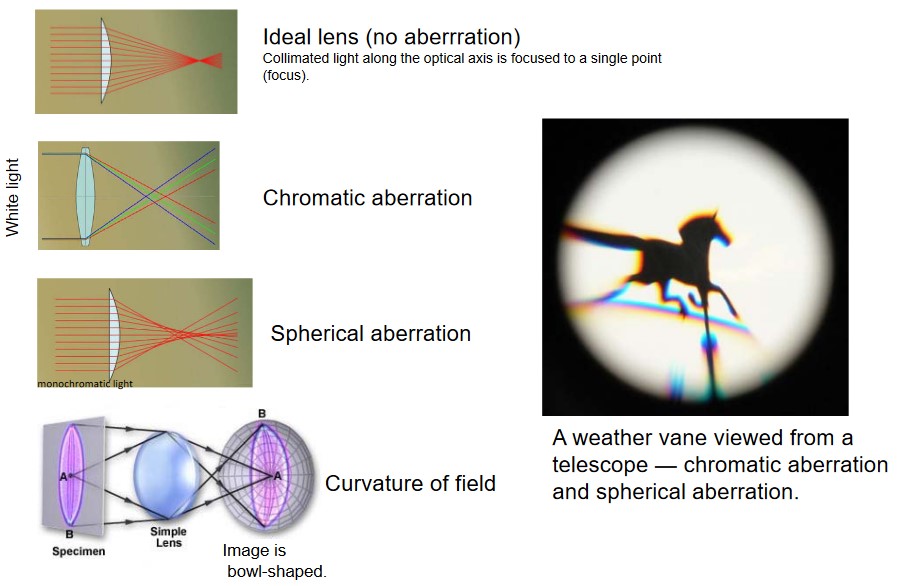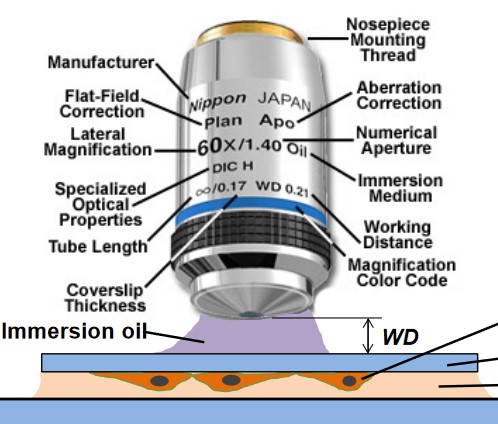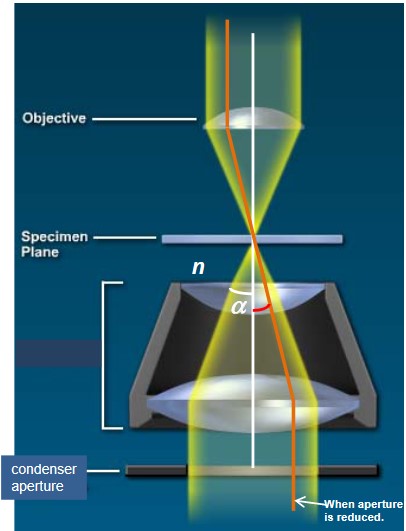3.1 Objective Lens Specifications
An objective has numerous specifications as outlined in the following sub-subsections:
3.1.1 Magnification
Some common magnifications include 5x, 10x, 20x, 40x, 60x, and 100x.
The total magnification of an objective is:
Total magnification = objective magnification × eyepiece magnification
For instance, if the objective magnification is 10x and the eyepiece magnification is 60x, then the total magnification ios 600x.
The useful total magnification is equivalent to 500×NA.
3.1.1.1 Numerical Aperature

Figure 3.2: Components of Calculating NA
The Numerical Aperature (i.e., NA) of an objective determines the resolution of a microscope system. The NA is:
NA=nsin(α)
Where n is the refractive index of the immersion medium and α the half-cone angle (that is between 0 and 90 degrees). In dry air, n=1 and NA=sin(α)<1. Hence, oil, water, glycerol, and other media can greatly increase the NA.
Objective lenses with high magnifications can have high NAs. When an image becomes brighter, its NA also increases. NA decreases when magnification decreases.
A dry lens should not have oil applied to it!
3.1.2 Aberrations

Figure 3.4: Several Aberrations on a Wind Vane
Recall that an aberration is an imperfection in the final image seen through a microscope. The above figure shows chromatic and spherical aberrations on an image of a wind vane.
Chromatic aberrations occur as longer wave lengths of light (i.e., red) have a longer focal distance.

Figure 3.5: Possible Corrections for Optical Aberrations
The above table in the above figure shows some possible corrections for various aberrations.
3.1.3 Other Specifications

Figure 3.6: Parts of an Objective Lens Close Up
Some other specifications covered in BS2010 are:
Tube length
This is often referred to the infinity space in an infinite system.
Working Distance (i.e., WD)
This is measured in millimeters; the higher the magnification, the shorter the WD.
Cover Glass
This is usually about 0.17 mm.
Immersion Medium
This is the medium (e.g., air, oil, etc.) by which light travels through the objective lens.
